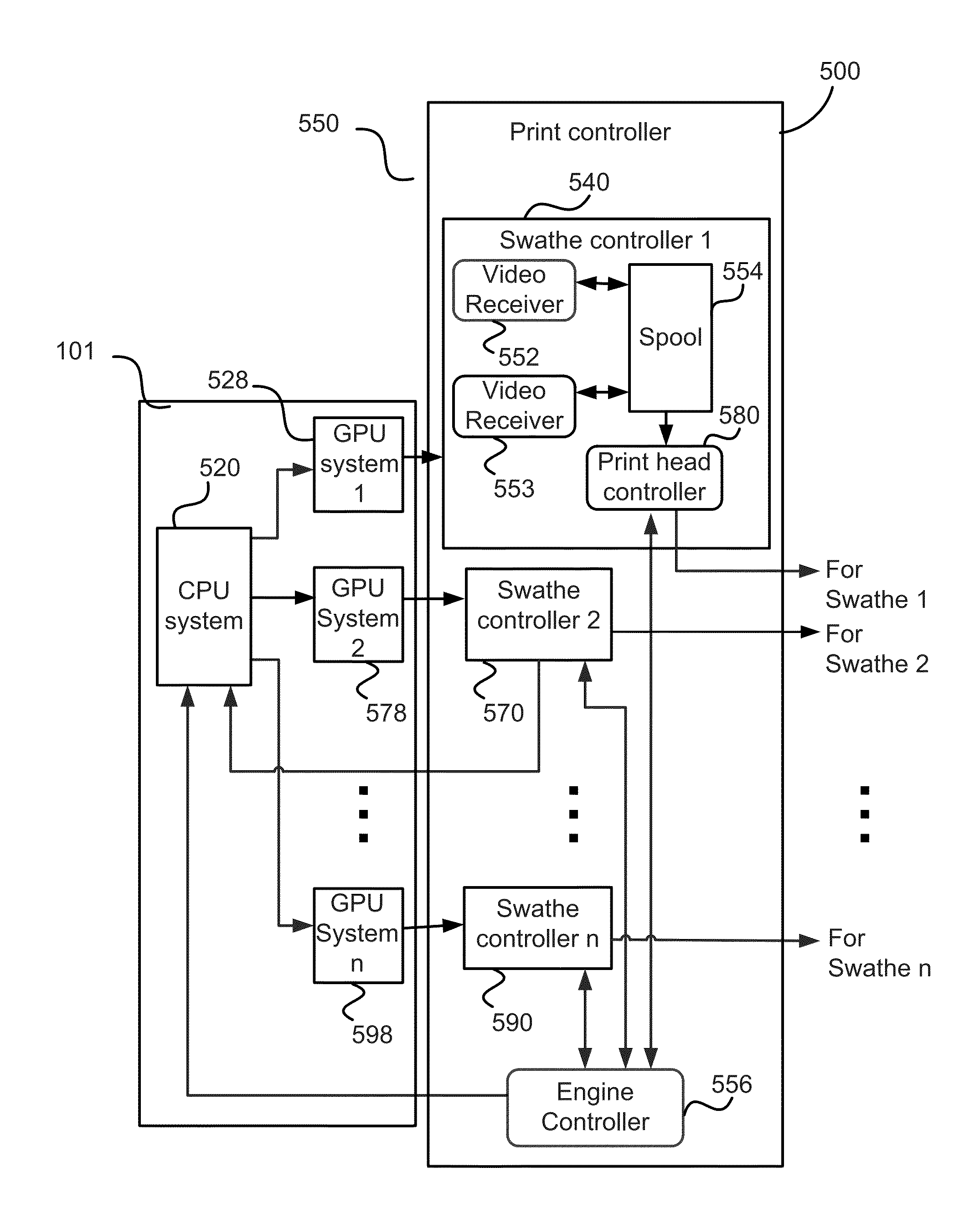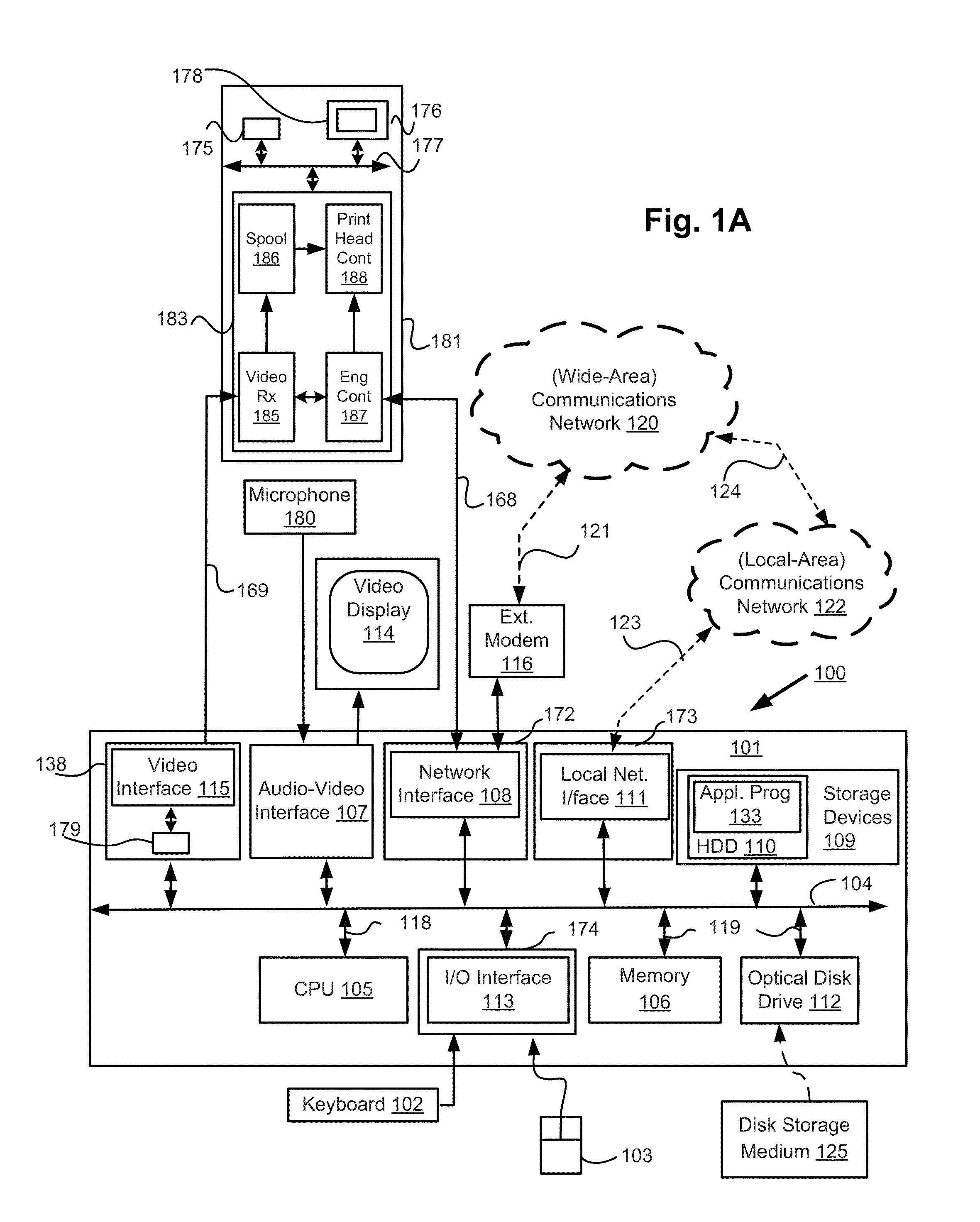Gpu-based rip architecture
a rip architecture and gpu technology, applied in the field of raster image processing, can solve the problems of reducing transfer time, gpus may not be used to their full potential, and requiring more bandwidth than a peripheral bus can provide,
- Summary
- Abstract
- Description
- Claims
- Application Information
AI Technical Summary
Benefits of technology
Problems solved by technology
Method used
Image
Examples
Embodiment Construction
[0041]Where reference is made in any one or more of the accompanying drawings to steps and / or features, which have the same reference numerals, those steps and / or features have for the purposes of this description the same function(s) or operation(s), unless the contrary intention appears.
[0042]A GPU-based RIP computer system 100 is described below with reference to FIGS. 1A and 1B. The computer system 100 may be used for implementing printing methods as described below.
[0043]The system 100 comprises a Graphics Processing Unit (GPU) card 138 configured within a computer module 101. As seen in FIG. 1A, the GPU card 138 comprises a memory unit 179. The memory unit 179 is typically formed from semiconductor random access memory (RAM). The GPU card 138 also comprises a video interface 115.
[0044]The computer module 101 is connected to an associated print controller 183 configured within a printer 181. The computer module 101 is also connected, via a network card 172, to an engine control...
PUM
 Login to View More
Login to View More Abstract
Description
Claims
Application Information
 Login to View More
Login to View More - R&D
- Intellectual Property
- Life Sciences
- Materials
- Tech Scout
- Unparalleled Data Quality
- Higher Quality Content
- 60% Fewer Hallucinations
Browse by: Latest US Patents, China's latest patents, Technical Efficacy Thesaurus, Application Domain, Technology Topic, Popular Technical Reports.
© 2025 PatSnap. All rights reserved.Legal|Privacy policy|Modern Slavery Act Transparency Statement|Sitemap|About US| Contact US: help@patsnap.com



